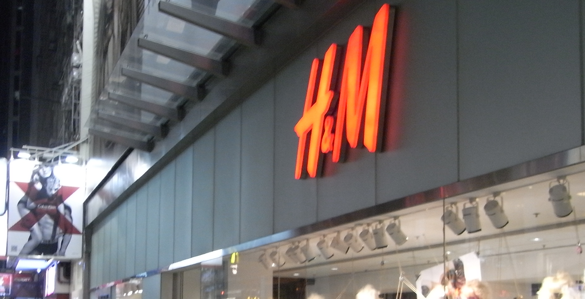Can retailers today operate in the middle sector without being stuck there?
Chris Lund is CEO at Perennial Inc.
If Stealers Wheel released their 1972 rock hit “Stuck in the Middle with You” today, and did it through the eyes of a Canadian retailer, they would likely title it “Stuck in the Middle Without You.”
There is growing competition at the deep discount, everyday-low-price end of the market while at the same time we see more competitors entering the high-end luxury sector.
The “middle” – once the epicentre of the Canadian retail marketplace – is under pressure as the shopping landscape becomes increasingly bi-modal.
Yahoo Finance suggested “there’s a shift happening in the Canadian marketplace, with many retailers moving away from the middle of the road to cater to either the high end or low end of the consumer segment.” Global News supports this: “For embattled retailers like Sears Canada, Best Buy and others situated in the middle of the country’s consumer marketplace, there may not be much relief in site.” Global also cited CIBC, which suggested discount giants will do well and high-end retailers will also see a lift as incomes continue to rise further for higher earners than for mid-to-low incomes.
Some Canadian shoppers abandoning the shrinking middle are migrating to low-end retailers like Walmart, Target, Winners and the Dollar Store. And why wouldn’t they? Increased competitive activity and consolidation are driving prices lower. With Walmart’s continual expansion and Target’s need to reboot its Canadian launch, price will be a fundamental tool used to attract customers.
On the other hand, those migrating to the high end will have more choice as Hudson’s Bay launches its Saks Fifth Avenue sibling, Nordstrom readies for its Canadian introduction and Holt Renfrew plans and executes it expansion.
Failed or failing retailers got stuck in the middle because of bad management and bad marketing. Sears, Macy’s, JCPenney and their peers have attempted to be all things for all people. They wanted one size to fit all. The brand promise was fuzzy and, like the old country and western lyric says, “stand for something or you’ll fall for anything.”
Can one survive in the middle without being stuck? For sure. There are plenty of examples of retailers who are doing so. Opportunistic retailers have recognized the challenging middle marketplace and, rather than abandon it, they have embraced the opportunity.
Forever 21, H&M and Charming Charlie are thriving from being in the middle without being stuck. They do so by having a very clear understanding of who they are, who they are serving, what their brand promise is and their value proposition. They are well managed and well marketed.
Most important, they have evolved retail experiences that connect with consumers, fulfilling a need beyond pure price and item transactions.
A great example is the cheap and cheerful accessories business. One option to win in this category is simply to insert bulk-merchandising units in a dollar store and become a cog in their high-volume, low-margin model. But the other is to become a category killer that captures dominant market share and thus far has sustained growth.
Meet Charming Charlie and their winning formula. According to Forbes‘ Dec. 16, 2013 issue, the 10-year-old company has…
• $400 million dollar annual sales
• a network of almost 300 stores
• an estimated business value of $1 billion dollars
They have a clear understanding of who they are: a focused accessories retailer.
They know who they are for: women shopping for fun, on a budget.
They have a simple brand promise: to help women find their fabulous.
They have a stated value proposition: value represents the intersection of good prices, unique accessories and broad inventory.
They bring all this to live in life in-store by:
• creating a customer-focused store experience in which accessories are merchandised according to the way women shop—by colour
• offering a fun easy to shop experience through merchandising that invites customers to explore
• having an extensive product offer, “thousands of accessories in one store.”
Charming Charlie’s is winning because of their unwavering focus on satisfying the middle’s desire to shop for small-ticket, high-turn, fun fashion. Great product and competitive prices are supported by a seamless in-store experience that considers the consumer decision-making process at each touch point.
So maybe Stealers Wheel had it right and it is possible and profitable to be “Stuck in the Middle With You.”











